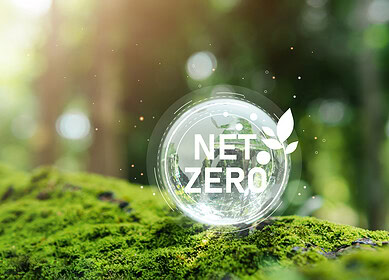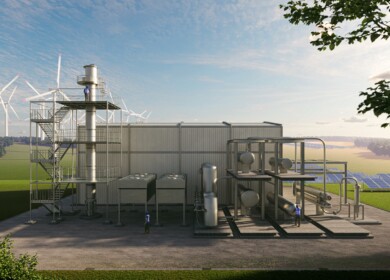Ammonia-powered tugboat sets a precedent for decarbonizing shipping

On a tributary of the Hudson River, the tugboat NH3 Kraken, powered by ammonia, embarked on its inaugural journey, signaling a significant step toward reducing carbon dioxide emissions in the maritime industry. Previously reliant on diesel fuel, this 67-year-old vessel was repurposed by New York-based startup Amogy to utilize cleanly produced ammonia, an emerging carbon-free fuel source.
According to the United Nations, emissions from the shipping sector have risen over the past decade, now accounting for approximately 3% of global greenhouse gas emissions. This increase correlates with the trend of larger vessels that transport more cargo but consume substantial amounts of fuel oil.
Amogy’s CEO, Seonghoon Woo, emphasized the immediate need for the maritime industry to switch to clean energy solutions. Woo and his co-founders, who met while studying at the Massachusetts Institute of Technology, launched Amogy in November 2020, driven by the vision of powering heavy industries sustainably. Woo noted that the project serves not only as a demonstration of Amogy’s technology but also as a call to action for the world to confront climate change more decisively.
The NH3 Kraken is named for its ammonia-based power system, which generates hydrogen for a fuel cell, effectively converting the tug into an electric vessel. The International Maritime Organization has set a target for international shipping to achieve net-zero greenhouse gas emissions by 2050, highlighting the critical need for rapid emission reductions.
Despite the growing interest in ammonia as a fuel alternative, challenges remain. While ammonia does not contain carbon, it is currently produced primarily from natural gas, a process detrimental to the environment. Furthermore, the combustion of ammonia must be carefully managed to prevent the release of nitrogen oxides, a potent greenhouse gas.
Amogy’s approach utilizes green ammonia generated from renewable electricity. The vessel is equipped with a 2,000-gallon tank that provides 10 to 12 hours of operational time. The process involves splitting liquid ammonia into hydrogen and nitrogen, channeling hydrogen into a fuel cell to produce electricity, with emissions primarily consisting of nitrogen and water.
Having successfully powered a drone, tractor, and semi-truck with ammonia in previous years, Amogy aims to expand its technology to vessels of varying sizes and even onshore applications, potentially replacing diesel generators in industries such as mining and construction.
The company has secured approximately $220 million in funding, with Amazon among its investors. Nick Ellis, principal of Amazon’s $2 billion Climate Pledge Fund, expressed enthusiasm for Amogy’s developments, noting that the technology could soon be implemented in commercial shipping.
Other industry players are also exploring ammonia-powered solutions. Fortescue’s Green Pioneer vessel in Singapore recently demonstrated ammonia’s viability in conjunction with diesel, while the Yara Eyde, an ammonia-powered container ship, is slated to launch in 2026.
Amogy is currently collaborating with major shipbuilders, including Hanwha Ocean, HD Hyundai, and Samsung Heavy Industries, to integrate ammonia technology into maritime applications.
Enjoyed this story?
Every Monday, our subscribers get their hands on a digest of the most trending agriculture news. You can join them too!














Discussion0 comments